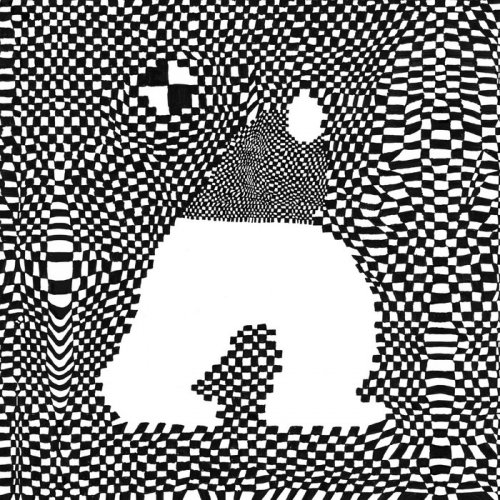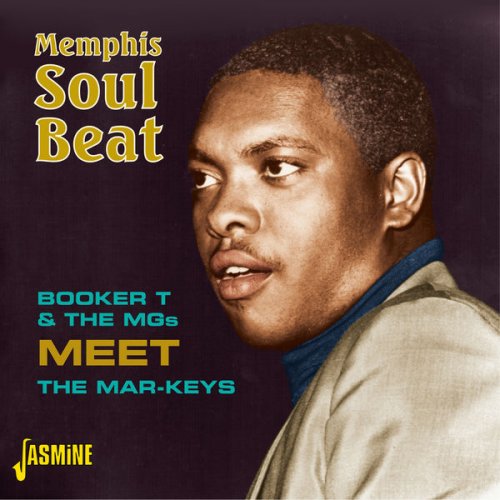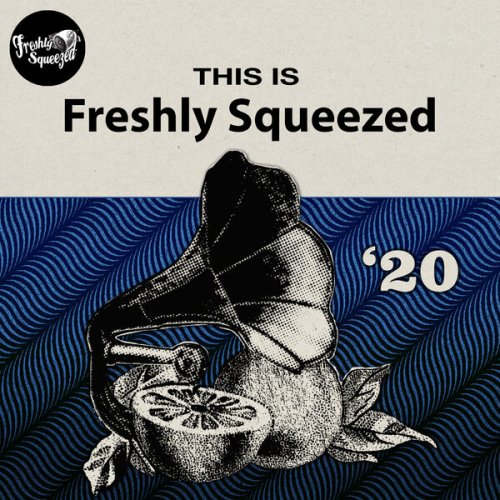SML - Small Medium Large (2024) Hi-Res

Artist: SML
Title: Small Medium Large
Year Of Release: 2024
Label: International Anthem
Genre: Electronic, Jazz, Post-Punk, Psychedelic Rock
Quality: 320 / FLAC (tracks) / FLAC (tracks) 24bit-48kHz
Total Time: 42:32
Total Size: 103 / 274 / 526 Mb
WebSite: Album Preview
Tracklist: Title: Small Medium Large
Year Of Release: 2024
Label: International Anthem
Genre: Electronic, Jazz, Post-Punk, Psychedelic Rock
Quality: 320 / FLAC (tracks) / FLAC (tracks) 24bit-48kHz
Total Time: 42:32
Total Size: 103 / 274 / 526 Mb
WebSite: Album Preview
01. Rubber Tree Dance (4:31)
02. Industry (4:27)
03. Herbie for Commercials (1:11)
04. Search Bar Hi Hat (4:05)
05. Window Sill Song (2:03)
06. Switchboard Operations (2:06)
07. Soft Sand (2:35)
08. Three Over Steel (5:43)
09. Chasing Brain (1:08)
10. History of Communication (2:58)
11. Feed The Birds (6:08)
12. Greg's Melody (2:21)
13. Dolphin Language (3:20)
Perhaps the most impressive thing about Small Medium Large is that every track has its own very distinct personality, despite the fact that they are all chiselled out of the same single stratum of sonic bedrock.
The frankly awesome Chicago label International Anthem has given us some of the best releases of the last three years, spreading the word of spiritual jazz, ambient, new age, devotional and otherwise experimental music far and wide. One of their most successful artists is Jeff Parker, whose albums Suite for Max Brown (2020) and Forfolks (2021) are already well on their way to classic status. Two years ago, Parker released a record called Mondays at the Enfield Tennis Academy, a full-band slice of long-form, freely improvised ambient jazz split into four sections. It was recorded live at ETA, a now-defunct LA venue, with a band that included bassist Anna Butterss and alto sax player Josh Johnson. Before ETA closed its doors in 2023, Butterss and Johnson hooked up with synth player Jeremiah Chiu, percussionist Booker Stardrum and guitarist Gregory Uhlmann to form the quintet SML. The live shows they played were recorded, dismantled and reassembled to create a single album of exploratory kosmische jazz.
It all begins with Rubber Tree Dance and an insistent groove that sits somewhere between organic and synthetic. The sax provides a melodic softness. The electric bass burbles and gulps. It seems simple, minimalistic, dubby, until you start following the different paths, assembling the music in your head just as the group must have done, and then you realise how precision must have gone into it, how difficult it must have been to create a sound that constantly seems to walk a tightrope between improvisation and neatly composed melody.
Lead track Industry is a perfect example: a standoff between kraut-rock propulsiveness and African-inspired groove knitted together by a kind of homespun electronica and finished with distorted sax and warped synths. It’s locked-in but, paradoxically, completely unfettered. Moments of tranquillity – the first part of Search Bar Hi Hat, for example – give way to itchy electro or globular funk. The ghost of Miles Davies at his most experimental flits in and out, but the almost filmic language of these improvisations also hints at bands like Popol Vuh. Three Over Steel is a woozy, honking slab of electro-funk, its rhythmic pulses becoming wilder and more intricate as it progresses, while History of Communication moves quickly from ambience to something more ambiguous as jittery synthetic stabs overcome the background hum.
This music contains unexpected multitudes. Even the shortest pieces, like the minute-long Herbie for Commercials, have their own distinct musical narratives. Window Sill Song is a polyrhythmic experiment backed by slowly unwinding sax: the result is innovative but also strangely tender. Johnson’s sax becomes more free-form on Switchboard Operations, where it is backed by electronic squiggles and a persistent low-level one-note clang, while Chasing Brain is an exercise in stretch and tension, like a tune played on an increasingly taut elastic band.
Perhaps the most impressive thing about Small Medium Large is that every track has its own very distinct personality, despite the fact that they are all chiselled out of the same single stratum of sonic bedrock. Sometimes, like in the lengthy and freewheeling Feed the Birds, a slight East Asian influence becomes apparent. Later in the same piece, there are African-inspired rhythms and even hints of New York no wave or John Zorn. This gives way to Greg’s Melody, full of invertebrate squiggles, and the closing track, Dolphin Language, whose watery effects might indicate a penchant for Japanese new age maestro Hiroshi Yoshimura. If this sounds like a recipe for an album whose constituent parts are constantly pulling against each other, that isn’t how it comes off. There is, in fact, a pointed and sincere unity to SML’s playing that can only be a result of the intimate and improvisational manner in which the music was conceived. Even at its most jazzy and complex moments, SML is bright, airy and never willfully obtuse.
The frankly awesome Chicago label International Anthem has given us some of the best releases of the last three years, spreading the word of spiritual jazz, ambient, new age, devotional and otherwise experimental music far and wide. One of their most successful artists is Jeff Parker, whose albums Suite for Max Brown (2020) and Forfolks (2021) are already well on their way to classic status. Two years ago, Parker released a record called Mondays at the Enfield Tennis Academy, a full-band slice of long-form, freely improvised ambient jazz split into four sections. It was recorded live at ETA, a now-defunct LA venue, with a band that included bassist Anna Butterss and alto sax player Josh Johnson. Before ETA closed its doors in 2023, Butterss and Johnson hooked up with synth player Jeremiah Chiu, percussionist Booker Stardrum and guitarist Gregory Uhlmann to form the quintet SML. The live shows they played were recorded, dismantled and reassembled to create a single album of exploratory kosmische jazz.
It all begins with Rubber Tree Dance and an insistent groove that sits somewhere between organic and synthetic. The sax provides a melodic softness. The electric bass burbles and gulps. It seems simple, minimalistic, dubby, until you start following the different paths, assembling the music in your head just as the group must have done, and then you realise how precision must have gone into it, how difficult it must have been to create a sound that constantly seems to walk a tightrope between improvisation and neatly composed melody.
Lead track Industry is a perfect example: a standoff between kraut-rock propulsiveness and African-inspired groove knitted together by a kind of homespun electronica and finished with distorted sax and warped synths. It’s locked-in but, paradoxically, completely unfettered. Moments of tranquillity – the first part of Search Bar Hi Hat, for example – give way to itchy electro or globular funk. The ghost of Miles Davies at his most experimental flits in and out, but the almost filmic language of these improvisations also hints at bands like Popol Vuh. Three Over Steel is a woozy, honking slab of electro-funk, its rhythmic pulses becoming wilder and more intricate as it progresses, while History of Communication moves quickly from ambience to something more ambiguous as jittery synthetic stabs overcome the background hum.
This music contains unexpected multitudes. Even the shortest pieces, like the minute-long Herbie for Commercials, have their own distinct musical narratives. Window Sill Song is a polyrhythmic experiment backed by slowly unwinding sax: the result is innovative but also strangely tender. Johnson’s sax becomes more free-form on Switchboard Operations, where it is backed by electronic squiggles and a persistent low-level one-note clang, while Chasing Brain is an exercise in stretch and tension, like a tune played on an increasingly taut elastic band.
Perhaps the most impressive thing about Small Medium Large is that every track has its own very distinct personality, despite the fact that they are all chiselled out of the same single stratum of sonic bedrock. Sometimes, like in the lengthy and freewheeling Feed the Birds, a slight East Asian influence becomes apparent. Later in the same piece, there are African-inspired rhythms and even hints of New York no wave or John Zorn. This gives way to Greg’s Melody, full of invertebrate squiggles, and the closing track, Dolphin Language, whose watery effects might indicate a penchant for Japanese new age maestro Hiroshi Yoshimura. If this sounds like a recipe for an album whose constituent parts are constantly pulling against each other, that isn’t how it comes off. There is, in fact, a pointed and sincere unity to SML’s playing that can only be a result of the intimate and improvisational manner in which the music was conceived. Even at its most jazzy and complex moments, SML is bright, airy and never willfully obtuse.
![Nat King Cole - Ramblin' Rose [Bonus Tracks] (2017) Nat King Cole - Ramblin' Rose [Bonus Tracks] (2017)](https://img.israbox.com/img/2025-11/02/h3y4f015x6zoes6wyl39dw23h.jpg)


![Isabel Berglund - Open Every Window (2025) [Hi-Res] Isabel Berglund - Open Every Window (2025) [Hi-Res]](https://www.dibpic.com/uploads/posts/2025-11/1762429905_z2u3zl2r4kega_600.jpg)

![Acoustic Caravan - Brillante (2025) [Hi-Res] Acoustic Caravan - Brillante (2025) [Hi-Res]](https://www.dibpic.com/uploads/posts/2025-11/1762429472_au9yjlhyiwgfc_600.jpg)

![Nina Strnad & Big Band RTV Slovenija - Trenutki z Jozetom Privskom (2019) [Hi-Res] Nina Strnad & Big Band RTV Slovenija - Trenutki z Jozetom Privskom (2019) [Hi-Res]](https://www.dibpic.com/uploads/posts/2025-11/1762434200_nsjp.jpg)
